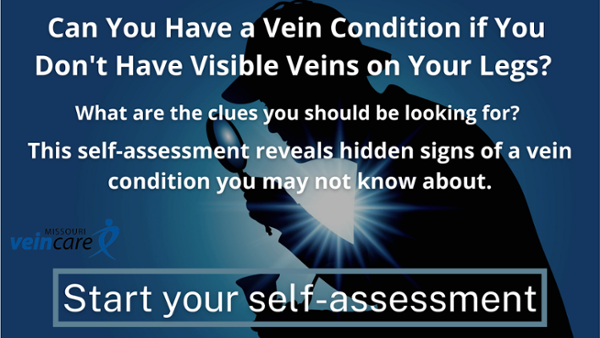Is a Vein Condition Serious?

People with a vein condition are naturally concerned that it is a serious condition and could lead to a blood clot, losing a leg, a heart attack, or even death. The reality is that none of those major concerns are likely to occur with a vein condition. While venous insufficiency is a health condition that affects people, it is not considered medically serious. It does, however, cause health problems that are concerning.
The main problem with a vein condition, which many would consider serious, is that it leads to weight gain. This happens because the symptoms of a vein condition, leg pain, leg swelling, and fatigue, slowly cause you to become inactive. As these symptoms worsen, you’ll find yourself less active than you have been in the past because your legs hurt, you lack energy, and need frequent rests.
Weight Gain: A Concerning Symptom of a Vein Condition
Symptoms of a vein condition are typically worse at night, such that when you come home in the evenings, all you want to do is elevate your legs to find relief from the pain and swelling. Once you sit down, you can’t seem to get back up. This sedentary lifestyle progressively worsens. Without regular activity, your weight will slowly creep up. Weight gain with a vein condition doesn’t happen overnight. Rather, people will slowly gain weight over time, sometimes up to 15-20 lbs a year. This weight gain then brings on additional health concerns that can become serious if left unattended.
When Should You Call a Doctor
With a vein condition, the blood becomes trapped in the veins of your lower legs, causing pressure on the vein walls as the blood pools. This is known as vein reflux and causes an inflammation response in your body The result of that inflammation is leg pain and leg swelling. Sometimes, you may notice visible leg veins - spider veins or varicose veins - but this is not common and doesn’t happen in every situation.
Pay attention if a vein becomes swollen and painful and pain and swelling lasts for more than a few days. It is highly unlikely but not impossible that you could develop a DVT or thrombophlebitis.
Deep vein thrombosis (DVT) occurs when a blood clot develops within the deep veins of your leg. Symptoms of a DVT are isolated swelling and pain in your leg. It is possible for a DVT blood clot to travel through the bloodstream and land in the lungs. This is a risk that healthcare providers take seriously.
A superficial thrombophlebitis is a blood clot that forms in the veins just under the skin - as opposed to the deeper veins of a DVT. Because superficial thrombophlebitis is closer to the surface of the skin, it is more visible. It is painful to touch, feels like a hard lump where the clot is and will look red with red streaks. It can be very painful when you are walking, and may last a few weeks before resolving itself.
The Good News is that Vein Treatment Works
If you have any of the symptoms of a vein condition, it’s important for you to know that a vein condition is manageable and highly treatable. The symptoms will go away, in most cases after the first treatment. Patients repeatedly tell me that they feel better than they have in years. They are able to be active again, and many are inspired to start exercising and take control of their overall health. They go on to lose weight and avoid any of the more serious longer-term implications that result from carrying excess weight.



